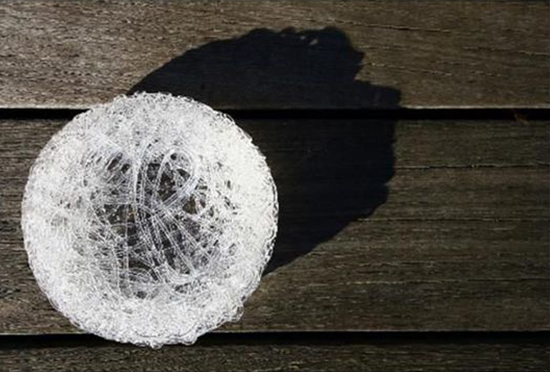The materials that can be used as 3D printing are quickly growing in diversity, including PLA, ABS, and nylon. However, one ubiquitous material, glass has been absent. There are two main reasons: First, it’s a complex process to turn molten glass into specific shapes; Secondly, molten glass is hard to control once it gets extruded through the nozzle. These challenges have made it relatively a very difficult material to work with for 3D printing.
But recently, researchers at MIT have cracked the challenge in this area. The team has developed a 3D printer that can print large size glass with good optical transparency. Now, scientists at Virginia Tech and the Rhode Island School of Design have also made progress: working together with Glass Robotics Lab (GRL), they have created robot-based 3D glass printing solution.

Six-axis 3D glass printing process developed by GRL
The new solution is known as “six-axis glass printing process”, a joint project by RISD’s glass artist Stefanie Pender and Virginia Tech assistant professor Nathan King since 2013. For all these years, they have focused their effort to integrate modern robotic technology into handmade glass crafting. The robotic 3D printer is their answer.
Although the six-axis glass printing system is still sort of rough looking, it produces some interesting results. In this system, the molten glass is housed in a crucible, flowing out under gravity. The algorithm controlled robotic arm will move a tile around under the extruder that layers molten glass on to the tile into preprogrammed shape. To the contrary, most other systems move the nozzle above, extruding molten glass on to a fixed tile underneath.
The two developers of the GRL six-axis glass printing system stated that the emphasis of their invention was more of the integration of art, design, and glass as the material rather than commercialization. “This research is evidence that the traditional technical arts will not be replaced by digital fabrication, instead, the technical arts will help to drive and support the direction of future manufacturing industry,” said Pender.

